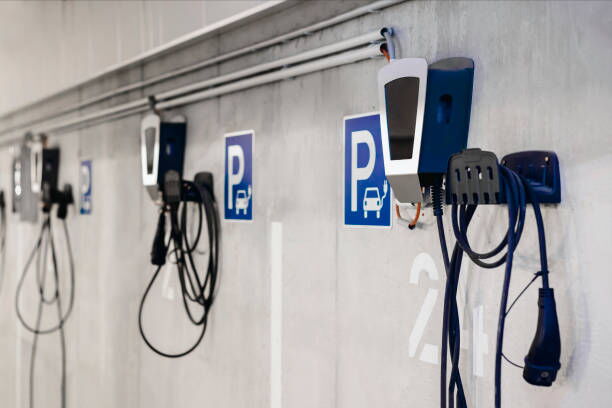On this page
Electric vehicle (EV) charging stations are essential for supporting the growth of electric mobility, but their costs vary significantly depending on the type, location, and installation complexity. This article breaks down the costs associated with Level 1 home EV chargers, Level 2 public and residential chargers, and Level 3 ultra-fast public chargers.
While this initial investment may seem significant, the faster charging speeds and long-term convenience often outweigh the costs for EV owners who frequently use their vehicles.

While this initial investment may seem significant, the faster charging speeds and long-term convenience often outweigh the costs for EV owners who frequently use their vehicles.
Public Level 2 chargers, commonly found in places like parking lots, hotels, and shopping centers, have higher costs than home units.
A single-port Level 2 charging station typically costs between $1,950 and $3,000, with prices increasing for multi-port solutions. These chargers are wall-mounted or pedestal-mounted, with pedestal options often incurring higher costs due to the additional materials and labor involved.
The installation of public Level 2 chargers can significantly influence overall costs. Basic installations, such as wall-mounted units in parking garages, may cost around $6,000, including cabling and minor electrical work. However, for outdoor setups—such as pedestal-mounted or curbside chargers—the costs rise substantially due to trenching, additional cabling, and upgraded electrical circuits. These installations often represent 60% to 80% of the total project cost.
Level 2 chargers provide faster charging than standard power outlets, fully replenishing a 24 kWh battery in 2 to 5 hours. On average, these stations add 40 to 100 km of range per hour, making them suitable for EV drivers in urban and suburban areas.
Level 3 chargers, also known as DC fast chargers or ultra-fast chargers, offer unparalleled speed, making them a critical component of highway charging networks and service stations.
The hardware for a Level 3 charging station ranges from $40,000 to $100,000 per unit. These chargers are designed to deliver high-power charging, enabling EVs to charge from 0 to 80% in approximately 15 to 20 minutes, with a full charge achievable in 45 to 60 minutes.
Installing Level 3 chargers is complex and expensive, with costs ranging from $15,000 to $60,000 depending on factors such as:
The distance to the electrical grid.
The need for a 480-volt transformer to support high-power output.
Electrical infrastructure upgrades to handle the high current draw.
In many cases, the installation cost depends on the existing infrastructure. Locations with minimal electrical upgrades required will incur lower costs, while remote areas or those needing significant upgrades will see costs on the higher end of the spectrum.
The distance to the electrical grid.
The need for a 480-volt transformer to support high-power output.
Electrical infrastructure upgrades to handle the high current draw.
In many cases, the installation cost depends on the existing infrastructure. Locations with minimal electrical upgrades required will incur lower costs, while remote areas or those needing significant upgrades will see costs on the higher end of the spectrum.
Several factors influence the overall cost of installing EV charging stations, including:
Urban installations may benefit from existing infrastructure, while rural or remote locations often require costly upgrades.
Wall-mounted chargers are generally more affordable to install than pedestal-mounted units, which involve additional construction work.
The proximity of the charger to the existing electrical system and the need for panel upgrades can greatly impact costs.
Local regulations and permit fees can add to installation costs.
The cost of EV charging stations varies widely depending on the type and location. For home installations, Level 2 chargers provide a balance of affordability and convenience, with total costs typically ranging from $1,550 to $4,300 for hardware and installation. Public Level 2 chargers are more expensive due to higher installation complexities, often reaching $9,000 or more. Level 3 ultra-fast chargers represent a significant investment, with costs ranging from $55,000 to $160,000 per station, making them ideal for high-traffic areas and long-distance travel corridors.
As the adoption of EVs grows, the cost of charging infrastructure is expected to decrease, driven by technological advancements and economies of scale. Whether for individual use or commercial applications, investing in EV charging stations is a crucial step toward a sustainable, electrified future.
As the adoption of EVs grows, the cost of charging infrastructure is expected to decrease, driven by technological advancements and economies of scale. Whether for individual use or commercial applications, investing in EV charging stations is a crucial step toward a sustainable, electrified future.